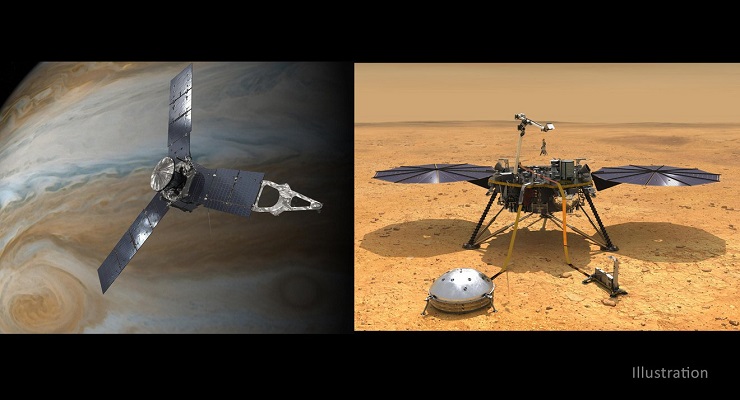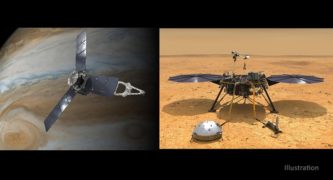
NASA has extended the Juno mission being managed by Jet Propulsion Laboratory in Pasadena to explore Jupiter through September 2025, expanding the science goals to include the overall Jovian system, made up of the planet and its rings and moons.
In addition to continuing to explore the Solar System’s largest planet, NASA’s planetary orbiter will rendezvous with three of the most intriguing Jovian moons.
“Since its first orbit in 2016, Juno has delivered one revelation after another about the inner workings of this massive gas giant,” said Southwest Research Institute’s Scott Bolton, Juno principal investigator. “With the extended mission, we will answer fundamental questions that arose during Juno’s prime mission while reaching beyond the planet to explore Jupiter’s ring system and largest satellites.”
Proposed in 2003 and launched in 2011, Juno arrived at Jupiter on July 4, 2016. The prime mission operations will be completed in July 2021. The extended mission includes 42 additional orbits including close passes of Jupiter’s north polar cyclones and flybys of the Galilean moons Ganymede, Europa and Io, as well as the first extensive exploration of Jupiter’s ring system.
The extended mission represents an efficient advance for NASA’s Solar System exploration strategy. The data Juno collects will complement the goals of the next generation of missions to the Jovian system — NASA’s Europa Clipper and ESA’s JUpiter ICy moons Explorer (JUICE). Juno’s investigation of Jupiter’s volcanic moon Io addresses many science goals identified by the National Academy of Sciences for a future Io explorer mission.
The extended mission’s science campaigns expand on discoveries Juno has already made about Jupiter’s interior structure, internal magnetic field, magnetosphere and atmosphere, including its deep atmosphere, polar cyclones and auroras.
“With this extension, Juno becomes its own follow-on mission,” said Steve Levin, Juno project scientist at JPL. “Close-up observations of the pole, radio occultations, satellite flybys, and focused magnetic field studies combine to make a new mission, the next logical step in our exploration of the Jovian system.”
For example, scientists will target Jupiter’s enigmatic “Great Blue Spot,” an isolated patch near the planet’s equator exhibiting an intense magnetic field, deploying high spatial resolution magnetic surveys during six flybys. As Juno’s orbit evolves, multiple flybys of Ganymede (2), Europa (3), and Io (11) are planned en route to multiple passages through Jupiter’s tenuous rings.
The natural evolution of Juno’s polar orbit around the gas giant provides new science opportunities that the extended mission capitalizes on.
“The mission designers have done an amazing job crafting an extended mission that conserves the mission’s single most valuable resource — fuel,” said Ed Hirst, Juno project manager from JPL. “Gravity assists from multiple satellite flybys steer our spacecraft through the Jovian system while providing a wealth of science opportunities.”














 0 comments
0 comments


